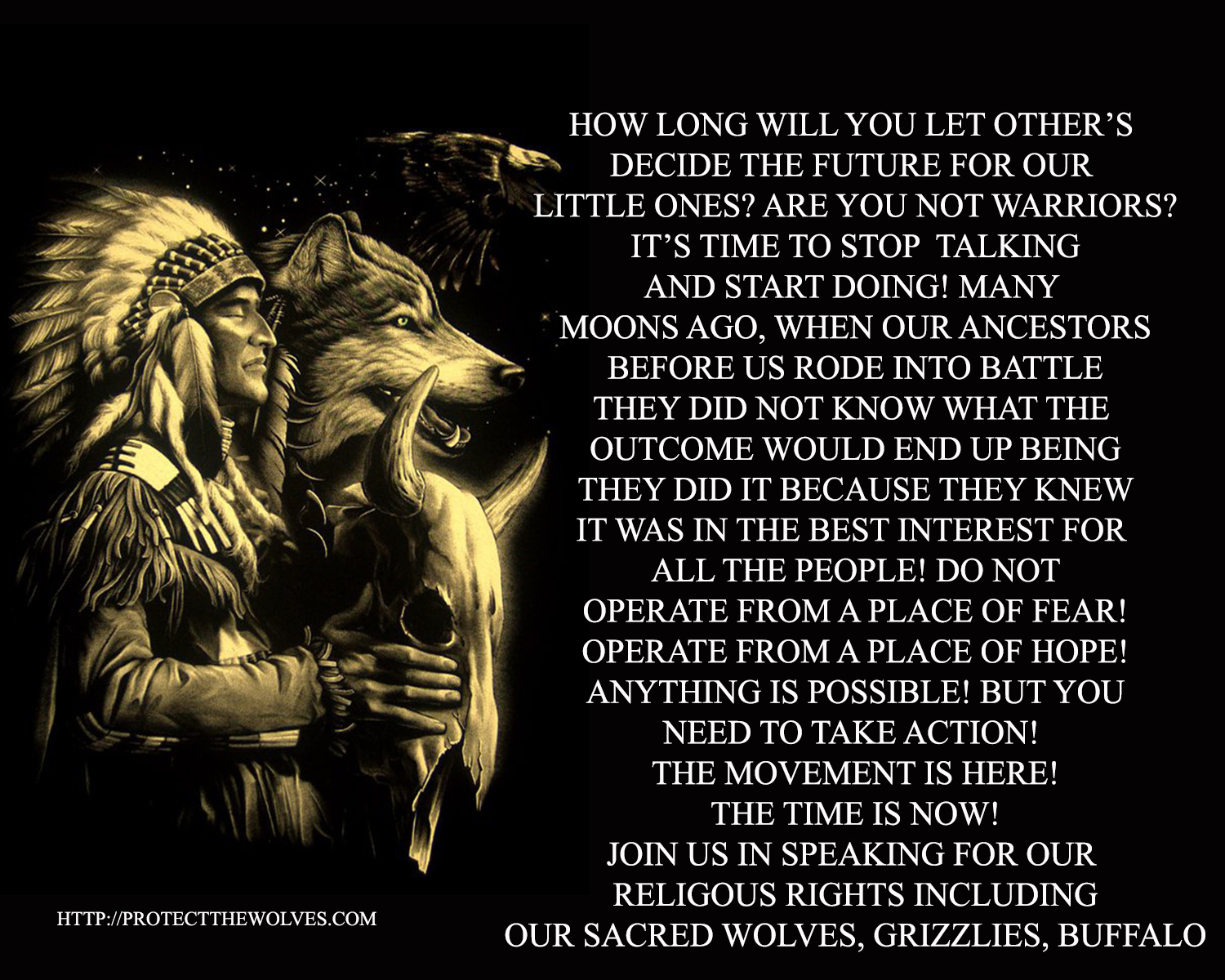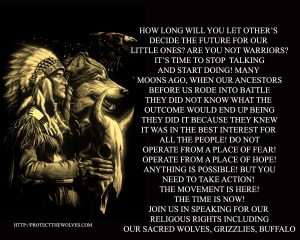Wolves in Native American Culture
Edwin Wollert / Education Coordinator / Wolf Song of Alaska
Did you know?
The Navajo word for wolf, “mai-coh,” also means witch, and a person could transform if he or she donned a wolf skin. So the Europeans were not the only ones with werewolf legends. However, the American tribes have an overwhelming tendency to look upon the wolf in a much more favorable light. The Navajo themselves have healing ceremonies which call upon Powers to restore peace and harmony to the ill, and the wolf is one such Power.
“The caribou feeds the wolf, but it is the wolf who keeps the caribou strong.”
-Keewatin Eskimo saying
Native American tribes recognized the wolf for its extreme devotion to its family, and many drew parallels between wolf pack members and the members of the tribe. Also, the wolf’s superior and cooperative hunting skills made it the envy of many tribes. Finally, the wolf was known to defend its home against outsiders, a task with which each tribe had to contend as well.
Some examples of the wolf appearing throughout Native American religion and mythology include the following. The Eskimos told of an old woman, Qisaruatsiaq, who was abandoned and forced to live by herself, and who eventually turned into a wolf. The Sioux called the wolf “shunk manitu tanka,” or “animal that looks like a dog but is a powerful spirit.” Cheyenne medicine men rubbed warrior arrows against wolf fur to bring better success in hunting. The Nootka celebrated spiritual ties to the wolf, in a ceremony whereby they pretended to bring back to life the chief’s dead son, by wearing wolf clothing. The Cherokee would not kill a wolf, believing the dead wolf’s siblings would enact revenge. They also imitated the wolf’s walk to help ward off frostbite to their feet. The Crow dressed in wolf skins to hunt. The Mandan displayed on their moccasins wolf tails, signs of success in battle. Women of the Hidatsa tribe rubbed their bellies with wolf skin to alleviate difficult childbirth. The Cree believed divine wolves visited earth when the northern lights would shine during winter. The Ahtena would prop dead wolves up, sometimes feeding them ceremonial meals. Chippewa myths tell of wolves supplying humans with food and hides. The Delaware tribe thought a change in weather might be announced through a wolf’s howl. The Hopis include Wolf as one of the Katchinas, the costumed dancers who represent the powers of the universe.
Indian creation mythology sometimes involves wolves, as in this example from the heritage of the Arikara tribe:
“In the beginning, they say, was water and sky. Here on high you could find Nesaru the sky spirit, and Wolf and Lucky-man. Below lay a watery vastness, empty, it seemed, with only two small ducks swimming about, making eternal, small ripples. Envisioning another kind of earth, with space and variety for myriad creatures, Wolf and Lucky-man asked the ducks to dive down for mud. Using his endless energy, Wolf took half of the mud to build a great prairie for hunting beasts like himself. Lucky-man, his partner in creation, built hills and valleys where the Indians could hunt and live. Last they pushed up the remaining mud into banks of a river, which you can still see, to divide their territories.
Earth was ready. Wolf and Lucky-man understood that large creatures must emerge from the reproduction of smaller, humble ones. They enter deep into the earth to find two Spiders who are meant to begin propagating the world. Imagine their disgust when they find the Spiders to be not only ignorant of the business of reproduction, but so dirty and ugly that they aren’t interested in each other. Wolf and Lucky-man scrub down their charges and explain the pleasures and responsibilities of fertilization. Clean and enlightened, the Spiders give birth to earth’s many creatures – the eight-legged like themselves, the six, the four, and finally the two-legged ones.”
– Cottie Burland
Perhaps the tribe with the closest of all associations with the wolf is the Pawnee, in the lands now known as Nebraska and Kansas. The Pawnee felt such a close kinship that their hand-signal for wolf is the same as the hand-signal for Pawnee. They were known as the Wolf People even by neighboring tribes. The cyclical appearance and disappearance of Sirius, the Wolf Star, indicated the wolf coming and going from the spirit world, running down the trail of the Wolf Road, otherwise known as the Milky Way. The Blackfoot tribe also called our galaxy the Wolf Trail, or the Route to Heaven. The Pawnee, like the Hidatsa and Oto tribes, used wolf bundles, pouches of skins from wolves in which to keep and protect treasured implements used for ceremonies and magic.
Source: Wolves in Native American Culture | Wolf Song of Alaska

